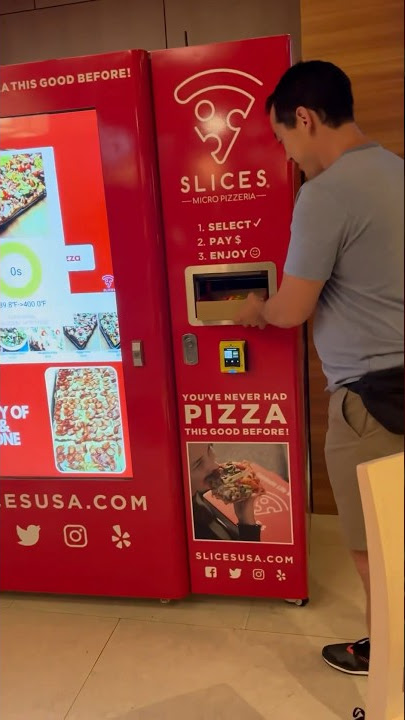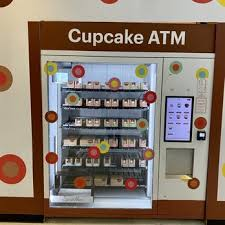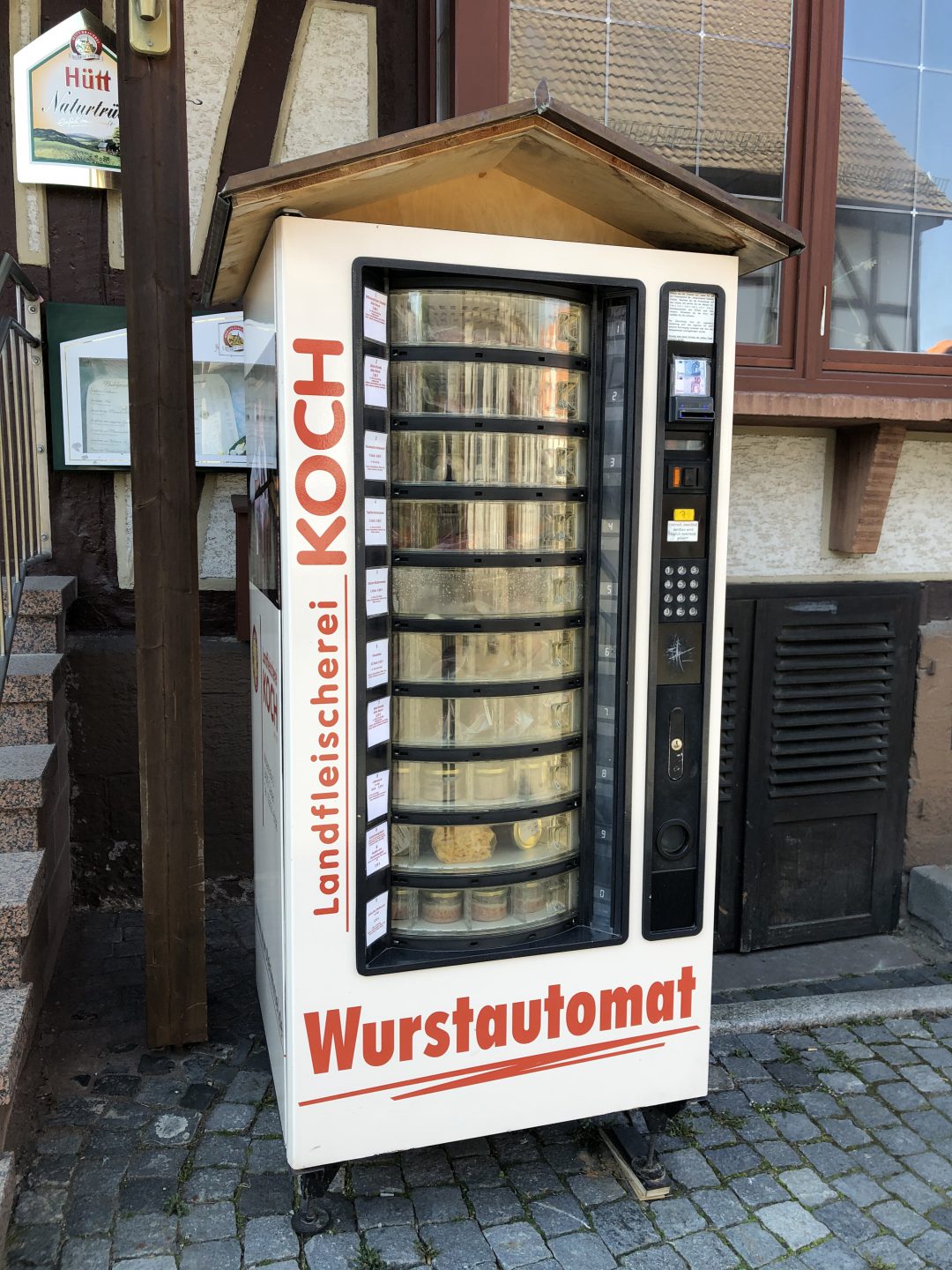with supply and demand and all… IM DEMANDING CANNED BREAD!! where’s the supply 🥺?
It replaces workers with robots so it would probably save money too.
Japan can have more vending machines, because their culture raises people in a way that they have less vandalism and the companies take more responsibility for problems with vending.
I thought you were going to say that their culture is more insular and less sociable, because that would be a better explanation than the popularity of vending machines.
I’m in France. There is a gas station near me with three vending machines : drinks, pizzas, and CBD.
The pizza one is mostly fine. The grid protecting the screen was torn apart. Tbf it was annoying. The drinks one is damaged, and is now protected by a metal cage. The CBD machine is completely destroyed.
All publicly available objects in France end up like this.
People in the US don’t respect others property. Look at any atm machine or vending machine. There’s no way these things wouldn’t be vandalized immediately.
Completely this. Americans don’t like letting other people have nice things. A vending machine would be vandalized, filled with glue as a TikTok prank, attempted to be stolen, and stop working within a few days.
Americans don’t really give a shit about other people. We’re more individualistic. You got yours? Good. Fuck everyone else. If we have to have protests and fundraising efforts to TRY to convince people to help others – we got a long way to go.
Japan is built on respect for your fellow man. You can leave your wallet out somewhere and someone would return it immediately.
Respect for your fellow Japanese man. They have a long way to go in the xenophobia angle.
Americans often don’t respect other Americans, NOR other countries. We also know xenophobia/racism well.
Respect for others property might follow respect for others but that’s not a popular concept in America
When I visited california, there was a mall with multiple vending machines like the one in the OP for various foods and icecreams.
Bet it was inside the mall, with a camera watching it. Japanese vending machines like the one mentioned can be just outside nbd.
They were in the hallways, not out on the street. I didn’t look for any cameras, but there wasn’t any security nearby that would’ve seen anyone vandalize them. If there were cameras, I can’t imagine it mean much to people wearing a mask.
I’m not saying vandalism isn’t more common in the US, I’m sure it is in compared to hyper-respectful Japan, but I don’t think it’s absolutely impossible to have these.
Growing up in the south eastern US vending machines were a common sight in a number of public spaces, and they were completely fine. No idea what third-world parts of the country the rest of these people grew up in.
It’s a shame too because automats used to be a great way for urban poor to get low cost food. I know a vending machine isn’t the same as an automat but they are similar and would be treated similarly.
This is the answer. Japan has a lot of respect for others (well, for other japanese at least), so these types of machines will last a lot longer; making the payoff more palatable.
Place a vending machine outside in America, and it’ll be vandalized in a week max.
Vending machines in the USA are common, but they are typically attached to an existing business. For instance, a Walmart or gas station will commonly host several machines in its entrance area.
Vandalize? … the entire machine would be stolen. Either by thieves wanting to steal the merchandise or money or both. Or a bunch of teens that would tie a chain to it and drag it to the end of town for fun.
I just saw a book vending machine in an elementary school this weekend…I thought that was kind of cool.
Yeah we have those outside!

There are little free library boxes everywhere in my town!
Vending machines work better when there’s more foot traffic and more density.
Vending machines with specialty goods (as pictured) need to be restocked every day and they require even more foot traffic. I think this is the biggest factor why OP’s vending machine is not viable in a lot of places in the US.
I’d argue places like Sheetz serve a similar function in the US
That one is actually pretty hot.
Bro, do you even vend?
Pizza vending machine in Seattle:

Cupcake ATM in Beverly Hills (and 3 other cities I’ve been in including Orlando FL and Las Vegas):

Oh that’s rad! Wonder if the amount of public areas in cities could relate to have more vending machines. The closest city to me doesn’t have a lot of public spaces.
I would imagine the requirement would be high foot traffic. Food has an incredibly short shelf life compared to other vending machine contents. That pizza vending machine likely has to be serviced/refilled/cycled every 2 or 3 days. The cupcake ATM would be slightly longer. Most of the cupcake ATMs are attached to the cupcake bakeries, but allow customers to buy from the ATM outside of business hours or when the line of customer is really long inside.
The pizza vending machine is in a hotel a block away from a larger physical location by for the same company. So similar arrangement. Probably easy for them to maintain
This is at the Hyatt, ain’t it?
What’s the wait time for the pizza to bake?
Too much reliance on cars for transportation and commerce built around that. Compared to Japan; we don’t have the opportunity for vending machines except when we are contained to a location without the ability to go to a store that isn’t that “far”. We have a larger scale of living; a half hour drive is normal to us, but a half hour drive for other countries is at the tipping point of finding a place to stay for the night and a vending machine selling a common foodstuff makes sense.
If you were forced to walk everywhere and “corner stores” were infrequent, vending machines would be far more common and worthwhile for owners of those machines.
That is most likely the right answer.
I’m in Switzerland and we have vending machines (not as cool as the Japanese ones tho) because we walk past them everyday.
They are generally on the pavement near post offices, at train stations and other large public transportation places. For a time there was cigarettes vending machines near bars but I think those are now forbidden.
TBF I also felt Swiss people are much more trustworthy than most.
I even remember having going out for dinner and the person behind the counter asking what we ordered; seems like a lot of restaurant ordering systems don’t keep track of orders because you can trust people being honest when they re-state their order at the counter.
I’m from the Netherlands, also in a very walkable city (Utrecht), and students would vandalise vending machines if they existed!
Trust and respect are some of the core principles in Swiss education and society. There are those well known newspapers stands that always amaze tourists. They are not locked nor monitored but people still pay for the newspaper.
For the restaurants it can be true but most places will know what you had only because the cash register system works like that (like they take the order on a phone that automatically sends everything to the kitchen and till). It’s mostly because all the systems available on the market works like that.
But as everywhere, things are changing for the worse, there’s more and more violence, disrespect etc.
Fun fact, I once had French friends visiting and they saw a field where you can take fruits yourself, weight them and pay the according price. No human supervision, no cameras. They were amazed and told me “In France we wouldn’t pay for the fruits, steal the money box AND the weighting machine”

lol, I only know the selecta ones but I’ll try the wurstaumat next time I’m in the german part of the ruesti.
I’m with you until the last paragraph. Corner stores are all over the place in Japan. It’s fantastic.
Food without a human guarded? Free meal?
Walmart and Amazon have expensive canned bread.
apparently people like it?
as for cool vending machines… gotta be cool to have cool vending machines.
Oh neat. I go through bread really slowly and often end up throwing a lot of it out whenever I buy some. That could work well for me.
Edit: that seems like expensive bread
There are a lot of cool vending machines in Japan, but the food ones are usually gross.
Yeah. I prefer the schoolgirl used panties or ass juice ones myself.
Well, I was thinking the coffee or electronics ones. But I’ll take your word for it.
Sometimes those vending machines are very unsanitary and would not pass health regulations here in the US.
We’re trying to get away from wrapping everything in plastic film.
That’s not a factor, there are a good selection of cellophane-like materials that are biodegradable
It replaces workers with robots so it would probably save money too.
And now the workers cannot afford bread.
Next move?
We have cool ones here, too!

I spy digipet
Somehow related. There is a Japanese anime where the protagonist is a human that reborns as a vending machine.
Been watching it. It’s fucking wacky
Uh where can it go from there
It is quite interesting. I don’t think that there is a better adjective than that. It is called ‘Reborn as a Vending Machine, I Now Wander the Dungeon’.












